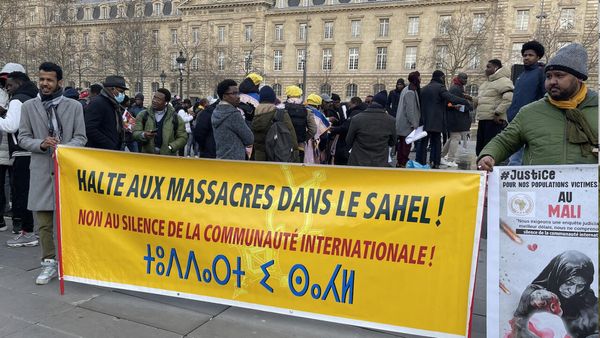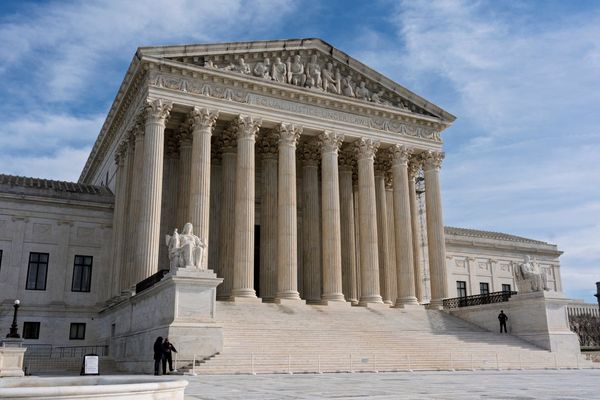
YEREVAN, Armenia—As Azerbaijani forces continue to advance in Nagorno-Karabakh, the region is facing a very real risk of massive ethnic cleansing—again.
This war began on Sept. 27. Already hundreds of people have been killed, waves of hatred have engulfed both societies, and international diplomats’ efforts to stem the violence have had little effect. It is the most dangerous moment in the region since the two sides fought their first war in the early 1990s after the collapse of the Soviet Union.
The roots of the current fighting lie the ethnic cleansing that took place as a result of that first war. Then, as the Soviet Union was collapsing, Armenians sought to take control of Nagorno-Karabakh, a majority-Armenian enclave within the borders of Azerbaijan, then a fellow Soviet republic. Azerbaijanis resisted, and ethnic tensions spiked. Ethnic Armenians living in Azerbaijan were targeted by pogroms, and hundreds of thousands of Armenians fled Azerbaijan, as did Azerbaijanis who had been living in Armenia. In the war that ensued, Armenians managed to take control not only of Nagorno-Karabakh, but of large parts of Azerbaijani territory surrounding it that had previously had a negligible Armenian population. More than 600,000 ethnic Azerbaijanis were forced to flee their homes.
Azerbaijanis have not gotten over the impact of the war; the plight of the displaced and the injustice of the seizure of their lands remain a gaping wound. About 7 percent of Azerbaijan’s current population consists of internally displaced persons, one of the highest such rates in the world. Many of the displaced people continue to harbor hopes of returning to their homes and land. The population of the Armenian-controlled territory, meanwhile—about 150,000—is nearly 100 percent ethnic Armenian, and there are virtually no Azerbaijanis.
While the conflict is often referred to in shorthand as “the Karabakh war,” it is in fact the territories surrounding Nagorno-Karabakh that have become the key point of contention.
Armenians originally envisaged the seizure of these territories as a temporary measure: a security belt and a bargaining chip to return to Azerbaijan in exchange for concessions in return, such as the recognition of Nagorno-Karabakh itself as Armenian.
Over time, however, that conception has changed. Armenians more and more came see these territories as inherently theirs, as “liberated,” something impossible to consider giving back to Azerbaijan. The negotiations that once held some promise for a real peace deal have stagnated in recent years, and Azerbaijanis have increasingly come to the conclusion that Armenians were never going to voluntarily allow them to return to their former homes.
This is part of the ethnic cleansing story.
All this time, Azerbaijan’s government has been promising that when it retakes control of its territory, the rights of the current Armenian population will be respected and Nagorno-Karabakh will enjoy a high level of political autonomy inside Azerbaijan.
But as its leaders are saying that out of one side of their mouths, out of the other side they are heaping hateful rhetoric on Armenians. Government officials, media, and school textbooks have dehumanized Armenians for decades, portraying them as Azerbaijanis’ greatest enemy.
Most recently, a staff member of one of Azerbaijan’s top soccer teams wrote on social media, “We must kill all Armenians – children, women and the elderly. We need to kill them without making a distinction. No regrets. No compassion.” He was punished by the clubbut the post was widely spread among Armenians, who saw in it proof of the deep hate that’s been inculcated in Azerbaijan.
So Armenians have had little reason to believe the Azerbaijani government’s promises of a peaceful life under Azerbaijani rule.
Now that Azerbaijan has launched this offensive, with the aim of taking back at least some of its lost territories, Armenians’ worst fears have been realized. The way that Azerbaijan has been conducting the war has only confirmed Armenians’ fears that they now face a real threat of ethnic cleansing.
Azerbaijani forces have been indiscriminately bombarding Stepanakert, the de facto capital of Nagorno-Karabakh with a population of about 55,000, including with cluster bombs. (Armenia also has been documented as using cluster bombs.) They bombed a historic church. Tens of thousands of people have already fled Nagorno-Karabakh.
Azerbaijani forces have just retaken Shusha, the center of Azerbaijani history in Nagorno-Karabakh. They now have a clear firing line onto nearby, downhill Stepanakert. The last remaining journalists have been evacuated from Stepanakert, but as they were leaving they documented thousands more fleeing the city ahead of an expected Azerbaijani assault. It seems likely that the entire Armenian population may flee, and that the territory will again be ethnically cleansed.
It didn’t have to be like this.
For centuries, Armenians and Azerbaijanis lived peacefully together in Nagorno-Karabakh. Although the fabric of coexistence now seems irreparably torn, it began to fray only in the beginning of the 20th century. The first interethnic clashes took place amid the power vacuum of the waning Russian Empire. Later, the Soviet Union—for the first time in the region’s history—drew internal borders that attempted to correspond to the territory’s ethnic makeup. The early Soviet nationality policies “were underpinned by the principle that the world could and should be divided into discrete national groups, which belonged in clearly defined territories,” as historian Jo Laycock put it recently. In the Caucasus, this was an inexact science given the patchwork reality on the ground. In the case of Armenia and Azerbaijan, those national groups overlapped in Nagorno-Karabakh and other parts of the Caucasus. And so the Soviet division of territory inevitably gave rise to grievances on all sides. Late Soviet dissident nationalist intellectuals went further, writing rogue accounts of their respective groups’ histories that completely wrote other groups out of the story. Those histories became political consensus in both Armenia and Azerbaijan, effectively justifyinga monoethnic Nagorno-Karabakh—for both groups.
It is difficult today to imagine a way out of this dilemma. But the alternative is too horrible to accept: another humanitarian catastrophe and another deep injustice, this time with Nagorno-Karabakh’s Armenians as the victims. There’s a slim chance that the current bloodshed might sober up leaders on both sides and force them to accept the painful compromises that will eventually be needed for a real peace. Otherwise, it seems, the cycle of ethnic cleansing may never end.







